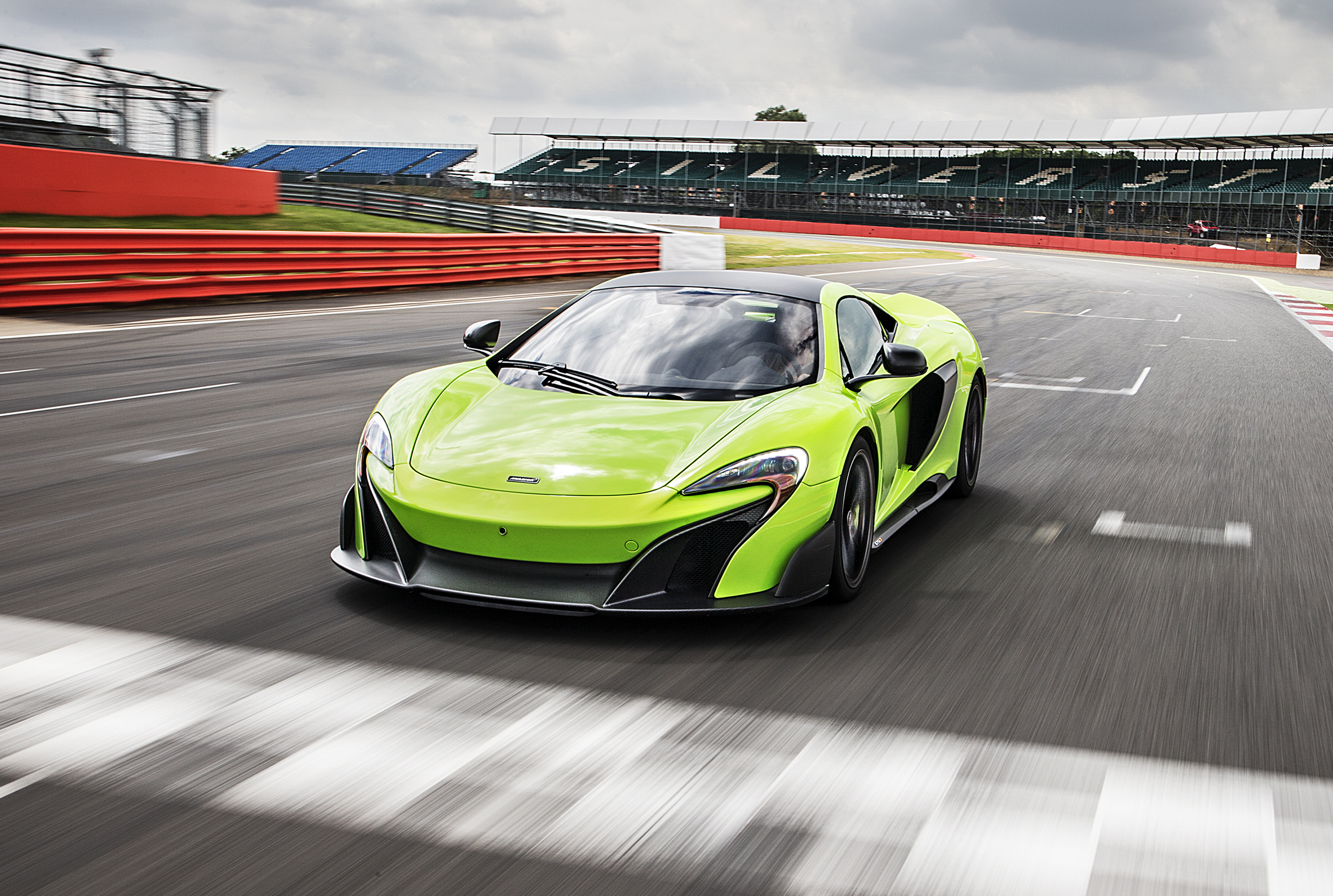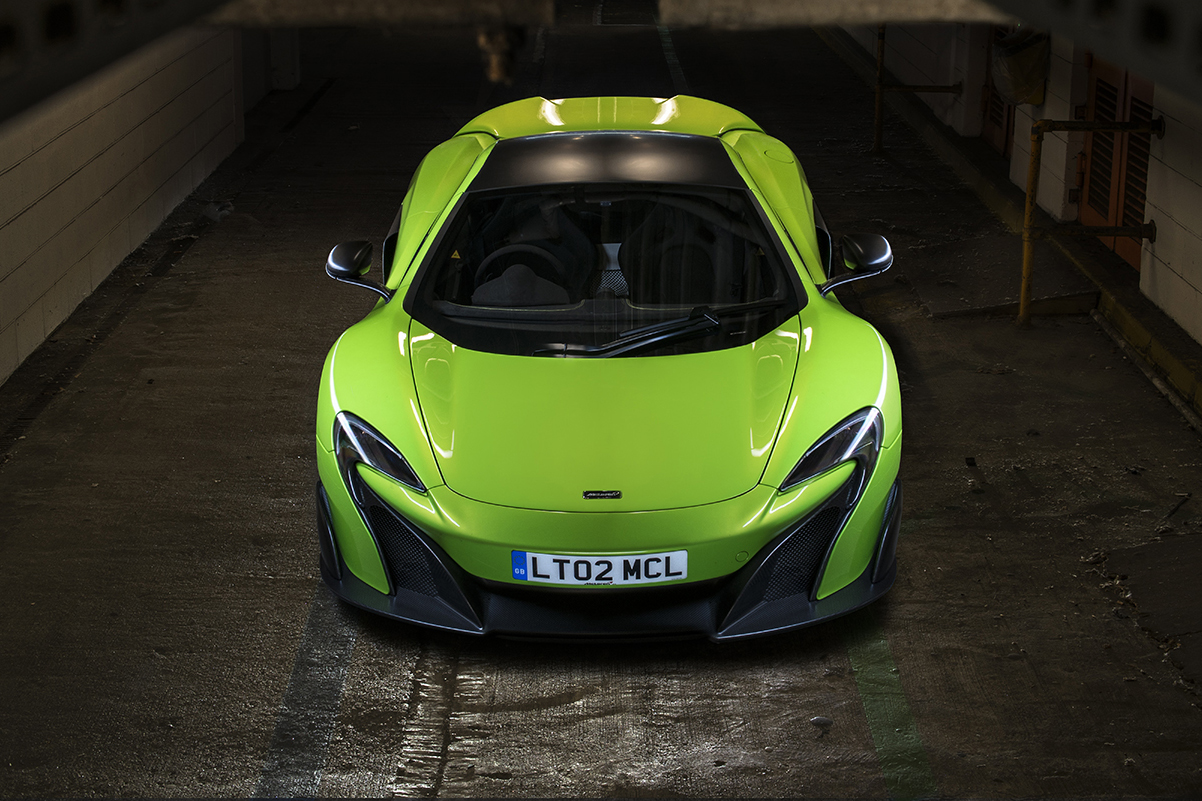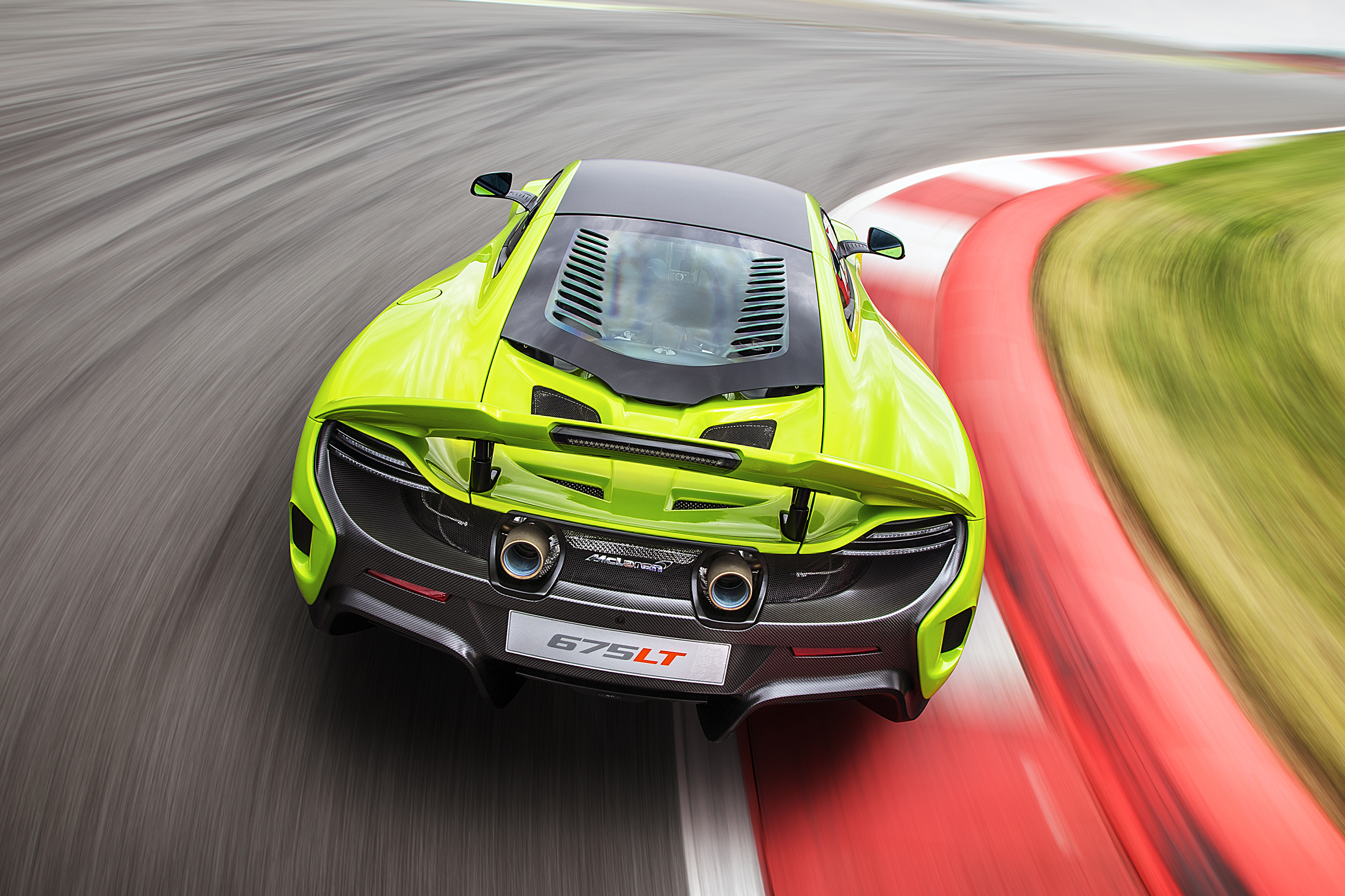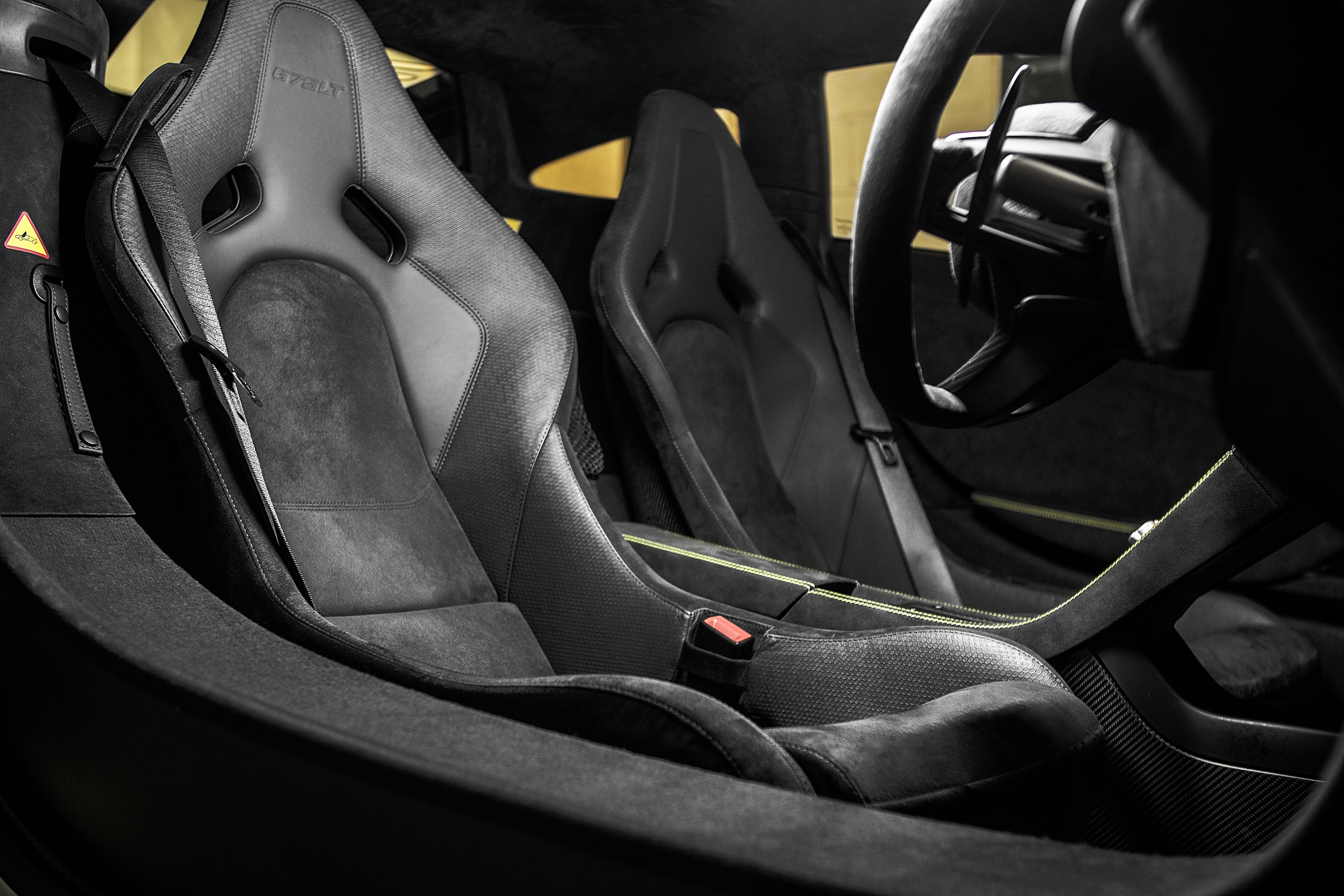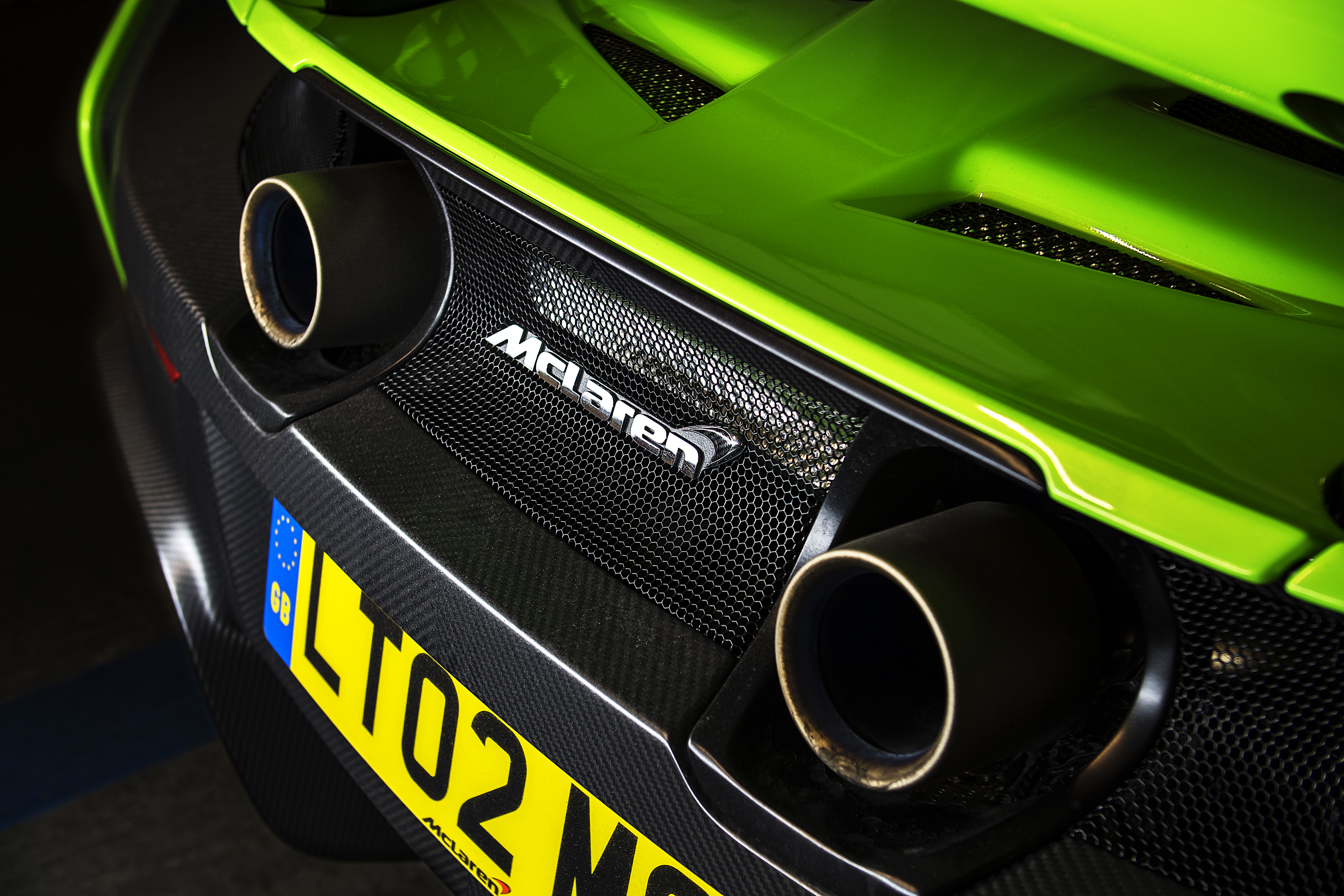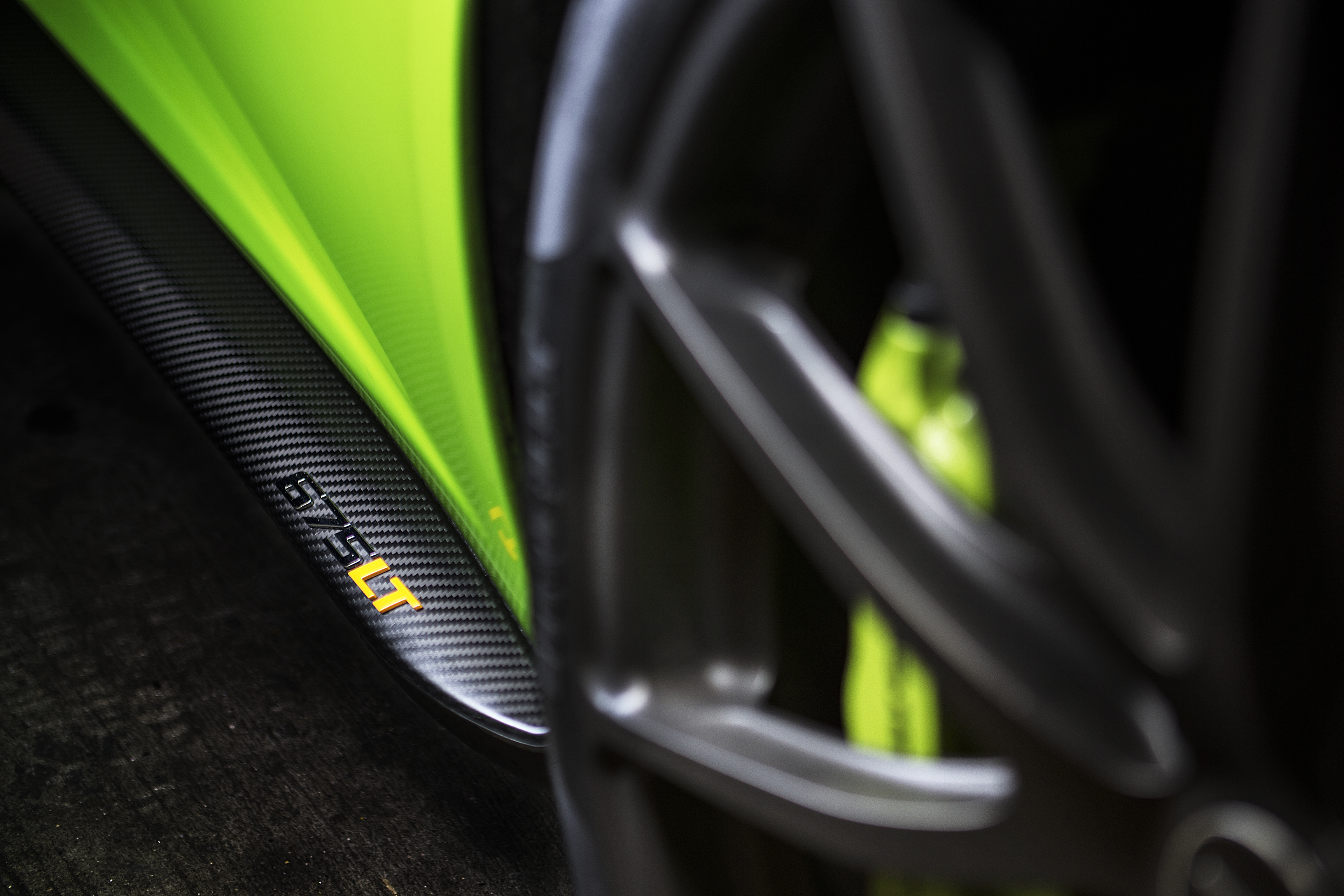
Big Read: is the 675LT McLaren's best road car since the F1?
£260,000, 666bhp, very green. Jason Barlow is bowled over by the McLaren 675LT
Rationality has haunted McLaren’s v2.0 adventure since it was kickstarted in 2009. Science isn’t on my mind right now, although it’s undoubtedly the reason I haven’t just punched a £259,500 hole in a hedge.
Words: Jason Barlow / Pictures: Lee Brimble
No, what’s on my mind equates roughly to “Waaaaaaaaahhhhhh!” Most unscientific. Why? Because the McLaren 675LT throws you down the road with such force it’s what you imagine bungee jumping off the back of the Space Shuttle must feel like.
And ‘feel’ is the word. A lot of modern supercars have such high limits that it’s difficult to get close to them without being superhuman or going toe to toe with the Grim Reaper. Most of us will tacitly admit that, say, a Golf R is more effective than a Koenigsegg on a tricky B-road. Not as memorable, but more effective.
The 675LT would be just great, though. In fact, the biggest problem would be working out which bit of the equation is the most stimulating – the immense power, the way the car transfers it to the road, or maybe even how it loses it all in what seems like a heartbeat. The 675LT throws so much at you that it’s difficult to process it in real time.
One thought takes hold, though: this might be the best McLaren road car since the F1, 22 years ago.
The official McLaren line is different, of course, but still illuminating. It says the 675LT represents a bigger jump from the 650S than that car was over the 12C. There’s more. CEO Mike Flewitt sums it up thusly: “The 675LT is the closest thing there is to a McLaren P1. Alongside [that car], it’s the most extreme expression yet of McLaren road car engineering.” Suddenly, £260k doesn’t seem quite so steep…
The 675LT is McLaren’s answer to the Ferrari 458 Speciale
To be reductive about it, the 675LT – it stands for Long Tail, a tribute to McLaren’s elongated 1997 endurance racer – is the company’s answer to the Ferrari 458 Speciale, a lightweight, more powerful, track-focused limited series car, dripping with aerodynamic know-how and aimed at the hedonist.
It’ll rip to 62mph in 2.9secs, 124mph in a barely believable 7.9secs, and thunder on up to 205mph. It weighs 1,320kg – 100 less than the 650S – meaning a 542bhp-per-tonne power-to-weight ratio.
“We had some people to beat, back in the day,” McLaren Automotive’s chief test driver Chris Goodwin says, pointing to the still-extraordinary-looking Nineties F1 LT behind us, “so the policy was to change a little bit of the car everywhere. The 650S is our core car, but to achieve the 675LT we changed a little bit of everything.”
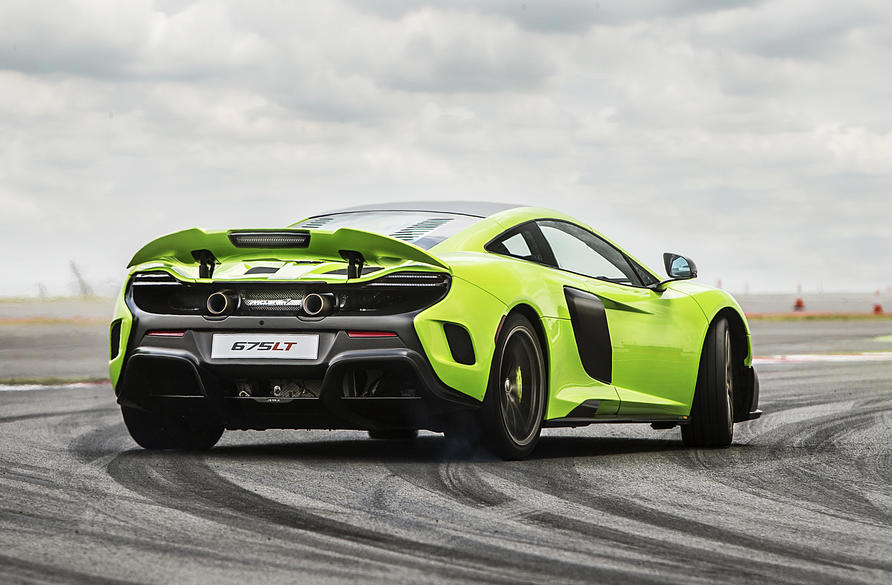
Quite a lot of everything, actually. A third of the car is new, and the reworking suggests that though McLaren has exorcised the ghost of over-rationality, function still prevails over form. The aero detail really is immense for a road car. The front bumper has a bigger splitter and new end plates, the underbody is new, the side skirts are reprofiled, the side air intakes are new, the rear wings are different, the rear screen is polycarbonate and the airbrake is 50 per cent bigger and more effective.
Top Gear
Newsletter
Thank you for subscribing to our newsletter. Look out for your regular round-up of news, reviews and offers in your inbox.
Get all the latest news, reviews and exclusives, direct to your inbox.
The dirty air around the front wheel arches is “cleaned” as it’s channelled towards the rear of the car by the side skirts (made of carbon fibre, by the way, as is most of the LT). The second side intake funnels cooling air into the radiators; they’re the same size as the ones on the 650S, but the angle has been increased from 15 to 19 degrees for greater efficiency.
The LT’s front and rear track have been widened by 20mm, to improve grip, turn-in and agility, and the ride height at the front has been reduced by the same amount, so that it cleaves the air at a more rakish angle. This in turn gets rid of the air at the back of the car more efficiently, and makes the rear diffuser work harder.
All this aero moves the centre of pressure forwards, resulting in superior downforce – 40 per cent more overall than the 650 generates. “In isolation it’s all just points on a graph,” admits Goodwin, “but on every corner around Silverstone, believe me, you really will feel the difference.”
Not just on the circuit. After a 45-minute immersion on the roads near the track, it’s rather difficult to think of a more focused or intense road car than this. Sure, a beardy purist might grumble about the McLaren’s reliance on forced induction, and though it definitely sounds more guttural than the 650S, and crackles and pops malevolently on the overrun, it’s still shy of the 458 Speciale’s aural thunder (it would be interesting to measure its noise levels alongside the new 488 GTB, though).
But only the most tedious die-hard could find fault with 666bhp (at 7,100rpm) and/or 516 torques (between 5,500rpm and 6,500rpm). The 3.8-litre twin-turbo now has lighter con rods and camshafts, a machined-from-solid (not cast) compressor wheel and a reprofiled titanium exhaust that’s 30cm larger and a lot more tuneful while being 1kg lighter than the standard one. In fact, half of the engine’s components are new.
Its performance puts it in the supercar stratosphere, as real-world fast as the hybrid hypercars
The result is a monumentally fast car. Almost other-worldly. The 675LT’s performance puts it in the supercar stratosphere, as real-world fast as the current hybrid hypercar superstars, and thus the sort of thing that demands maximum respect from the driver, not to mention Olympian levels of self-control. You will almost always be travelling faster than you think, so mental recalibration is in order.
Fortunately, speed is only part of the McLaren’s matrix. A faster rack means steering is sublime and the linearity of its major control responses utterly superb. The brakes are unchanged, but have perfect feel. Like the 650S, the LT uses McLaren’s ProActive Chassis Control (hydraulically interconnected dampers) and Brake Steer, but the Normal, Sport and Track settings have all been reworked to deliver edgier responses.
The suspension features new, lighter springs all-round, and the LT is 27 per cent stiffer at the front, 60 per cent stiffer at the rear. The uprights and wishbones are derived, says McLaren, from the P1. The 675LT also benefits from bespoke Pirelli P Zero Trofeo R rubber – 235/35 R19s at the front, 305/30 R20s at the rear – which offer six per cent more grip than the regular ones, while the forged alloys are even lighter than the P1’s.
The result is a car that attacks corners insatiably, relaying every morsel of information into the palms of your hands, while remaining astonishingly composed over sudden crests, surface imperfections or camber changes.
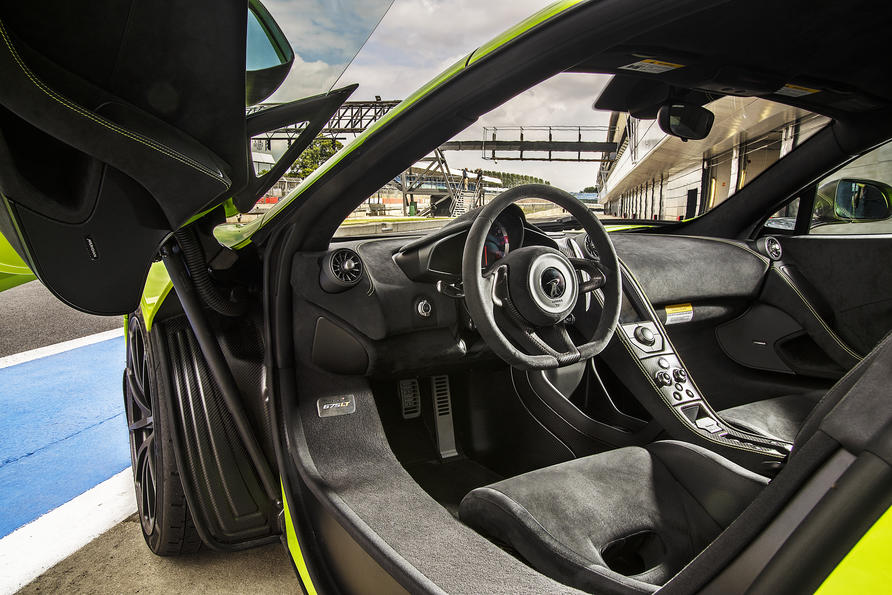
Its transmission is equally mighty. It’s eye-blink fast whatever the setting, but in Track mode, with more than 5,000rpm dialled up and 60 per cent throttle, McLaren’s Inertia Push tech delivers what it calls an “impulse of torque” as the next gear is engaged. Shift times are just 40ms, but the key thing here is that the driver isn’t left in the cold. It’s like being invited into the heart of a chemical reaction, and the result is the world’s finest dual-clutch gearbox.
Crucially, though, it’s perfectly usable despite its huge performance. The 675LT has a low cowl, and the driving position is pretty much perfect. It’s also relatively compact, so you’re not fidgeting nervously against the white lines or hedges, or slowing to a crawl as you meet an oncoming lorry. Fast driving is all about matching speed with vision; the 675LT has an abundance of both, and better manners all round than the amusing but unruly Honda Civic Type R.
Goodwin reckons Sport mode – the midway point in terms of damping and powertrain severity – will be most owners’ default setting. “Of all the cars we make, the 675LT is probably the one with the broadest overall capability. That’s why it’s so important to experience it on the road, as well as the track. Getting a car to turn in beautifully is one thing; ensuring the rest of it follows properly is another.”
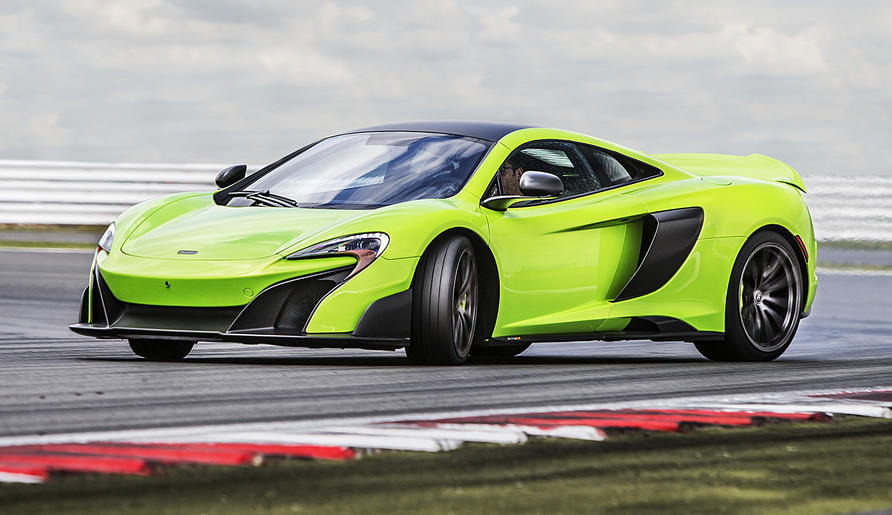
Nothing is perfect, however, and the 675LT does have issues. The first is that it costs £259,500 before you add niceties – carbon exterior pack (£7,890), track telemetry camera (£3,400) or maybe the Meridian 10-speaker audio upgrade (£3,150). That’s a mountain of money, but brings us to the second, trickier, problem – all 500 have been sold.
McLaren reckons a fair percentage of these will see regular track use, in which case their owners will need to respect this car’s skyscraping potential. Sport mode gives you more latitude to play, and in Track mode and with the ESC switched off, things get very interesting indeed – the slip angles are actually pretty narrow, and you need to be on the ball.
The current supercar breed has such software complexity and so many algorithms so deeply integrated into the car’s ‘mainframe’ that doing without them is an increasingly risky enterprise. Not to mention slower.
The F1, as per Gordon Murray’s uncompromising vision, was famously ‘unplugged’ – no ABS, no servo, no power steering, and only your right foot and reflexes for traction control. You simply couldn’t get away with that now, but in many ways the 675LT channels some of its predecessor’s singular character, raw edges included.
The LT will mind its own business if you want it to, but knowing what it’s capable of is arguably the biggest buzz of all. This is a brilliant, brilliant car.
Trending this week
- Car Review
BMW 1 Series







